Torvill and Dean
In the winter of 1984, two British ice dancers—Jayne Torvill and Christopher Dean—stepped onto Olympic ice in Sarajevo and rewrote the rules of sport, art, and global spectacle. Their performance to Maurice Ravel’s Boléro didn’t just earn a perfect score; it shattered expectations of what ice dancing could be. With perfect 6.0s from all judges for artistic impression and a total score that remains unmatched, Torvill and Dean became instant legends. But their impact extended far beyond the rink. They transformed ice dancing from a niche discipline into a cultural phenomenon, blending athleticism with theatrical storytelling. Their routine began with them lying on the ice, a gesture that defied convention and signaled a new era of narrative choreography. This wasn’t just sport—it was cinema, ballet, and myth woven into one. The world watched in awe, and the echoes of that moment still reverberate through pop culture, media, and the evolution of performance-based competition.
The Routine That Redefined Ice Dancing
Torvill and Dean’s Boléro was more than a technical masterpiece—it was a choreographic revolution. Starting prone on the ice, they used every second of their allotted time, pushing the boundaries of what was permissible under Olympic rules. Their decision to begin lying down was not just symbolic; it was strategic, allowing them to maximize musical phrasing and build dramatic tension. The routine unfolded like a crescendo, mirroring the structure of Ravel’s composition, with each movement intensifying toward a climactic finish. Their synchronization was flawless, but it was the emotional depth that captivated judges and audiences alike. They danced not just with precision but with purpose, embodying characters, conflict, and resolution. The choreography fused classical ballet with contemporary expression, rejecting rigid formality in favor of fluid storytelling. Every gesture was intentional, every glance choreographed to evoke longing, unity, and transcendence. The judges responded with unprecedented scores—perfect 6.0s from all judges for artistic impression, a feat never before achieved. The crowd erupted, and the performance became an instant global headline. Ice dancing, once considered secondary to singles and pairs, was now front-page news. Torvill and Dean had elevated the sport into an art form, setting a new standard for what Olympic performance could be. Their routine became a benchmark, studied by choreographers and athletes for decades. It wasn’t just a win—it was a transformation.
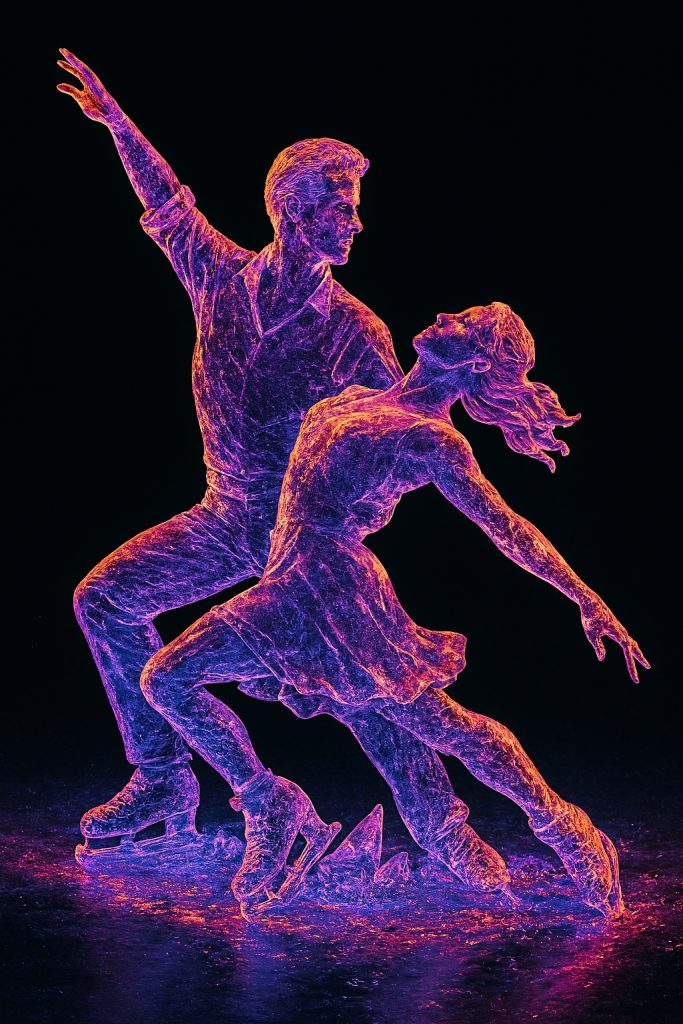
From Sarajevo to Stardom – The Cultural Ripple Effect
The impact of Torvill and Dean’s perfect score extended far beyond the Olympic arena. Within days, they were household names across continents, appearing on talk shows, magazine covers, and televised specials. Their performance was replayed endlessly, not just on sports channels but on arts programs and cultural retrospectives. They became symbols of British excellence, artistic innovation, and emotional storytelling. Their influence seeped into fashion, with skating costumes echoing their minimalist elegance and dramatic flair. Music videos in the late 1980s and early 1990s began to mimic their narrative structure—slow builds, emotional arcs, and climactic finales. Dance competitions adopted similar scoring systems that emphasized artistic impression alongside technical merit. Even figure skating itself evolved, with choreographers citing Boléro as a turning point in how routines were conceptualized. Torvill and Dean were invited to collaborate with ballet companies, theater directors, and television producers. Their story was adapted into documentaries and dramatizations, further cementing their place in pop culture. They inspired a generation of skaters to think beyond jumps and spins, to consider character, emotion, and story. Their legacy influenced not just ice dancing but the broader entertainment industry’s approach to performance. They proved that sport could be cinematic, that competition could be poetic. The perfect 10 became a metaphor for artistic transcendence, referenced in everything from advertising to award shows. Torvill and Dean didn’t just win—they changed the language of movement.
The Historical Stage – Ice Dancing Before Sarajevo
Before Torvill and Dean’s rise, ice dancing was a relatively obscure discipline within figure skating. It lacked the high-flying jumps of singles and pairs, and was often dismissed as ballroom dancing on ice. The judging criteria emphasized pattern precision and compulsory dances, leaving little room for creative expression. Most routines followed rigid formats, with limited musical variation and minimal narrative ambition.
Audiences appreciated the elegance but rarely felt emotionally moved. Television coverage was sparse, and few ice dancers achieved widespread fame. The sport’s insularity kept it from evolving, and innovation was often discouraged by conservative judging panels. In this context, Torvill and Dean’s approach was radical. They trained not just as skaters but as choreographers, dramatists, and storytellers. Their early routines hinted at theatrical ambition, but Boléro was the full realization of their vision.
By choosing a single, continuous piece of music and crafting a narrative arc, they broke the mold. They challenged the notion that ice dancing had to be polite, restrained, and formulaic. Their success forced governing bodies to reconsider the rules and scoring systems. Suddenly, artistry was not just tolerated—it was celebrated. The historical stage had been set, and Torvill and Dean rewrote the script.
Choreographic Genius – Building Boléro
The creation of Boléro was a meticulous process that blended athletic discipline with artistic experimentation. Torvill and Dean spent months analyzing Ravel’s score, mapping each crescendo to a movement. They worked with choreographers, musicians, and dramaturgs to ensure the routine had emotional coherence. Every step was designed to reflect the music’s hypnotic build.
They rehearsed tirelessly, refining transitions and testing the limits of their stamina. The opening pose—lying down—was a calculated risk, pushing the boundaries of Olympic timing rules. They used the 18 seconds before the music began to establish mood and tension. As the routine progressed, their movements grew more expansive, mirroring the orchestral swell.
The choreography avoided clichés, instead opting for abstract gestures that suggested longing, unity, and transformation. Their use of space was masterful, drawing the eye across the rink in sweeping arcs. They incorporated elements of ballet, modern dance, and mime, creating a hybrid language of motion. The final pose, locked in embrace, felt like a resolution to a silent story.
Critics hailed the routine as a masterpiece of kinetic storytelling. It wasn’t just technically perfect—it was emotionally resonant. Torvill and Dean had choreographed not just a routine, but a myth. Boléro became a blueprint for future innovation in ice dancing.
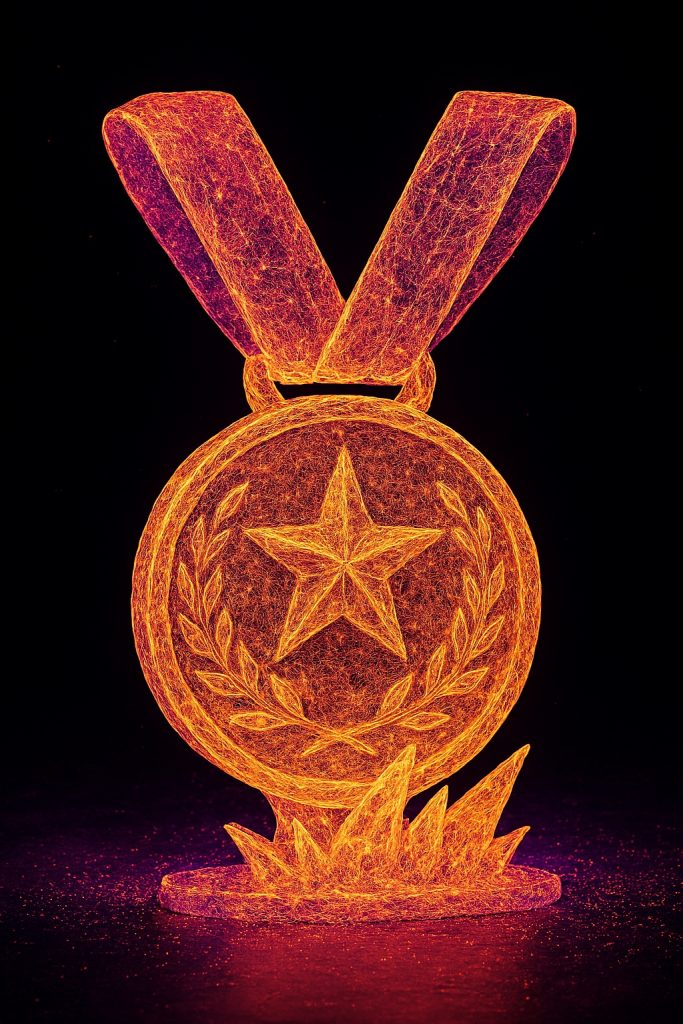
The Olympic Moment – Sarajevo 1984
The 1984 Winter Olympics in Sarajevo were marked by political tension and cultural diversity. Amid Cold War anxieties, the Games offered a rare moment of global unity. Torvill and Dean entered the competition as favorites, but few anticipated the magnitude of their impact. The Zetra Ice Rink was packed with spectators, and millions watched live broadcasts around the world.
As the music began, silence fell over the arena. Their routine unfolded with hypnotic grace, each movement building toward an emotional climax. The judges, known for their conservatism, were visibly moved. When the scores were announced— perfect 6.0s from all judges
for artistic impression—the crowd erupted. It was the highest score ever recorded in Olympic figure skating.
The moment was historic not just for its athletic achievement, but for its cultural resonance. Newspapers across the globe featured Torvill and Dean on their front pages. Commentators compared the performance to great works of art. The British public celebrated with parades and national honors. Sarajevo, too, embraced the duo as honorary citizens.
The Olympic moment became a global memory. It marked a turning point in how sport was perceived—not just as competition, but as performance. Torvill and Dean had elevated the Games into a cultural event.
Technical Innovation – Beyond the Score
While the perfect score captured headlines, the technical innovations behind Boléro were equally groundbreaking. Torvill and Dean redefined the use of time, music, and space in ice dancing. Their decision to use a single piece of music was unprecedented. Most routines relied on medleys or abrupt transitions, but Boléro offered a continuous emotional arc.
They also challenged the time limit rules, using the pre-music seconds to establish dramatic tension. This forced the International Skating Union to clarify regulations, proving that innovation could reshape policy. Their edge control, synchronization, and transitions were flawless. But it was their ability to fuse technique with emotion that set them apart.
They trained with ballet instructors to refine posture and line. Their lifts were subtle, elegant, and integrated into the narrative. They avoided flashy tricks in favor of seamless storytelling. Their footwork was intricate, yet never distracting. Every technical element served the emotional journey.
Future skaters studied their routine not just for inspiration, but for technique. Boléro became a masterclass in how to innovate within constraints. Torvill and Dean proved that technical mastery and artistic vision could coexist.
Media Explosion – From Athletes to Icons
After Sarajevo, Torvill and Dean became media sensations. Their story was covered by outlets far beyond the sports world. They appeared on talk shows, magazine covers, and cultural retrospectives. Their performance was replayed on arts programs, not just sports broadcasts.
They were invited to perform in galas, exhibitions, and televised specials. Their costumes, choreography, and emotional style influenced fashion and advertising. They collaborated with musicians, dancers, and filmmakers. Their fame extended to countries where ice dancing was previously unknown.
They became ambassadors for British culture, representing innovation and excellence. Documentaries chronicled their journey, and dramatizations brought their story to new audiences. They were referenced in sitcoms, parodied in comedy sketches, and honored in award shows. Their influence reached pop stars, choreographers, and directors.
They weren’t just athletes—they were icons. Their media presence helped redefine what it meant to be a performer in sport. They bridged the gap between competition and celebrity. Torvill and Dean became symbols of artistic athleticism.
Cultural Resonance – Echoes in Entertainment
The aesthetic and emotional style of Boléro echoed across entertainment industries. Music videos began to adopt similar narrative arcs—slow builds, emotional tension, and climactic releases. Dance competitions emphasized storytelling and artistic impression. Television shows referenced their routine as a benchmark of excellence.
Their influence reached theater, with choreographers citing Boléro as inspiration for stage movement. Fashion designers mimicked their minimalist elegance and dramatic silhouettes. Film directors studied their pacing and emotional structure. Their legacy shaped how performance was conceptualized across mediums.
They inspired a generation of skaters to prioritize emotion over spectacle. Their routine became a cultural touchstone, referenced in retrospectives and tributes. Even non-skating artists cited them as influences. Their impact was felt in visual art, music composition, and narrative design.
They proved that movement could be metaphor. That sport could be story. That emotion could be scored. Torvill and Dean’s resonance continues to shape entertainment today.
Legacy in Sport – A New Standard
Torvill and Dean’s perfect score set a new standard in ice dancing. Future competitors were judged not just on technique, but on artistry. The scoring system evolved to include components for interpretation and choreography. Their influence reshaped training methods and performance goals.
Skaters began working with artists, musicians, and dramatists. Routines became more theatrical, more emotionally driven. The boundaries between sport and art blurred. Torvill and Dean’s legacy became embedded in coaching philosophies.
Their impact extended to other disciplines—pairs, singles, and synchronized skating. Judges became more receptive to innovation and narrative. The sport gained new audiences, drawn by emotional storytelling. Ice dancing became a centerpiece of Olympic coverage.
Their legacy is visible in every routine that dares to be different. They proved that risk could lead to reward. That emotion could elevate technique. Torvill and Dean didn’t just change the rules—they changed the expectations.
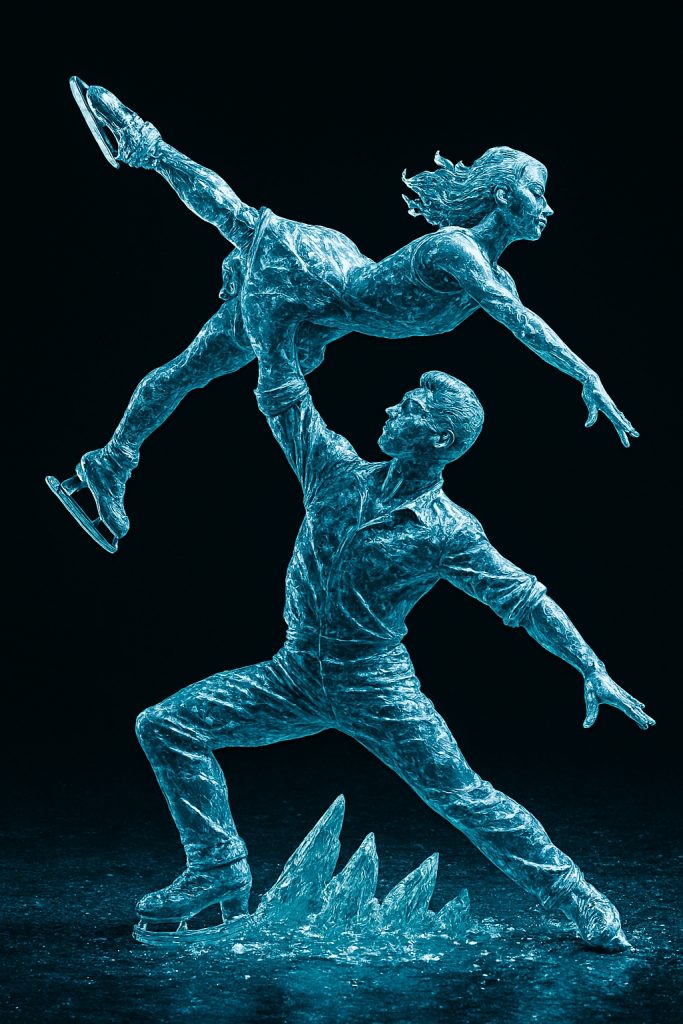
Reinvention and Return – The Legacy Continues
After their amateur career peaked in Sarajevo, Torvill and Dean didn’t fade—they evolved. They turned professional, touring globally and performing in ice shows that blended theatricality with athleticism. Their routines continued to push boundaries, exploring themes from mythology to modern love. Audiences flocked to see them not just for nostalgia, but for innovation.
In 1994, they made a dramatic return to Olympic competition in Lillehammer. Though rules had changed and the sport had evolved, their presence reignited public interest. Their new routine, set to Let’s Face the Music and Dance, was elegant and mature, reflecting their growth as artists. They placed third, but their comeback was hailed as a triumph of resilience and artistry.
Beyond competition, they became mentors, choreographers, and cultural ambassadors. They worked with young skaters, helping them develop emotional depth and narrative clarity. Their influence shaped generations, not just through technique but through philosophy. They taught that skating was not just about winning—it was about moving people.
Their legacy lives on in documentaries, tributes, and anniversary performances. They remain active in public life, sharing insights and reflecting on their journey. Their story is one of reinvention, of enduring relevance. Torvill and Dean didn’t just change the sport once—they continue to shape it with every return to the ice.
The Psychology of Perfection – Inside the Minds of Torvill and Dean
Behind the flawless execution of Boléro was a psychological framework built on trust, discipline, and shared vision. Torvill and Dean trained not just as partners, but as co-creators, constantly refining their emotional and physical synchronicity. Their rehearsals were immersive, often involving visualization techniques and musical immersion to internalize every beat. They approached choreography as dialogue, each movement a response to the other’s emotional cues. This mental alignment allowed them to perform with uncanny unity, as if one mind inhabited two bodies.
Pressure was immense—Olympic expectations, media scrutiny, and national pride weighed heavily. Yet they channeled that pressure into focus, treating the rink as a stage rather than a battlefield. Their ability to remain emotionally present while executing complex technical elements was rare. They didn’t compartmentalize emotion and technique—they fused them. This fusion created a performance that felt both spontaneous and sculpted.
Their psychological resilience became a model for athletes across disciplines. Sports psychologists studied their methods, citing them as examples of peak performance under pressure. Their story is not just one of talent, but of mental mastery. They proved that emotional intelligence is as vital as physical skill. In the pursuit of perfection, Torvill and Dean showed that the mind must dance as much as the body.
Symbolism on Ice – The Power of the Opening Pose
Few moments in Olympic history are as iconic as Torvill and Dean lying motionless on the ice before Boléro begins. That opening pose was more than a dramatic flourish—it was a symbolic rupture from tradition. In a sport defined by upright elegance, their prone position suggested vulnerability, rebirth, and defiance. It invited the audience into a narrative space, signaling that this would be a story, not just a routine. The silence before the music became part of the choreography, a breath held across the globe.
The gesture also challenged the temporal boundaries of competition. By using the pre-music seconds, they redefined how time could be used to build emotional tension. It was a protest against formulaic structure, a declaration that art could bend rules. Judges were stunned, unsure whether to penalize or reward the innovation. Ultimately, they chose to honor it, and history was made.
That pose has since been referenced in countless performances, tributes, and artistic reinterpretations. It became a visual shorthand for transformation, for the moment before emergence. In dance, theater, and even fashion, the motif of lying down before rising has echoed Torvill and Dean’s influence. They turned stillness into spectacle, silence into anticipation. The opening pose remains one of the most powerful gestures in Olympic history.
Audience Alchemy – Why the World Fell in Love
Torvill and Dean’s performance didn’t just impress—it enchanted. Audiences across cultures and generations felt emotionally connected to Boléro, even if they had never watched ice dancing before. The routine transcended language, geography, and genre, offering a universal story of unity and crescendo. Viewers described feeling chills, tears, and awe—responses more common to theater or cinema than sport. The emotional accessibility of the routine made it unforgettable.
Part of the magic was their chemistry. Torvill and Dean moved with such intimacy and synchronicity that audiences believed in their connection. Whether romantic or platonic, their bond was palpable, and it invited viewers into their shared world. They didn’t perform at the audience—they performed with them. This relational dynamic created a sense of collective experience.
The global response was immediate and enduring. Letters poured in, fan clubs formed, and media outlets scrambled to replay the performance. Even decades later, new generations discover Boléro and feel its emotional pull. Torvill and Dean created audience alchemy—turning spectators into participants, observers into believers. Their performance became a shared cultural memory, etched into the emotional landscape of millions.
Artistic Lineage – Inspirations and Successors
Torvill and Dean didn’t emerge from a vacuum—they were shaped by a lineage of artistic and athletic influences. They studied ballet, modern dance, and theatrical staging, drawing inspiration from Martha Graham, Rudolf Nureyev, and Pina Bausch. Their routines reflected the emotional intensity of expressionist dance and the spatial awareness of classical choreography. They also learned from previous ice dancers, adapting techniques while rejecting limitations. Their artistry was a synthesis of tradition and rebellion.
In turn, they inspired a new generation of skaters who saw ice as canvas, not constraint. Choreographers like Shae-Lynn Bourne and Christopher Wheeldon cited them as foundational influences. Skaters such as Tessa Virtue and Scott Moir built on their emotional storytelling, pushing narrative even further. The ripple effect extended to stage and screen, where movement-based storytelling gained new prominence. Torvill and Dean became part of a continuum of artistic evolution.
Their legacy is not static—it’s generative. Each new interpretation of Boléro, each homage or reference, adds to their mythos. They are not just remembered—they are reimagined. Their influence lives in every performance that dares to be poetic, every athlete who seeks to move hearts as well as bodies. Torvill and Dean are both origin and echo.
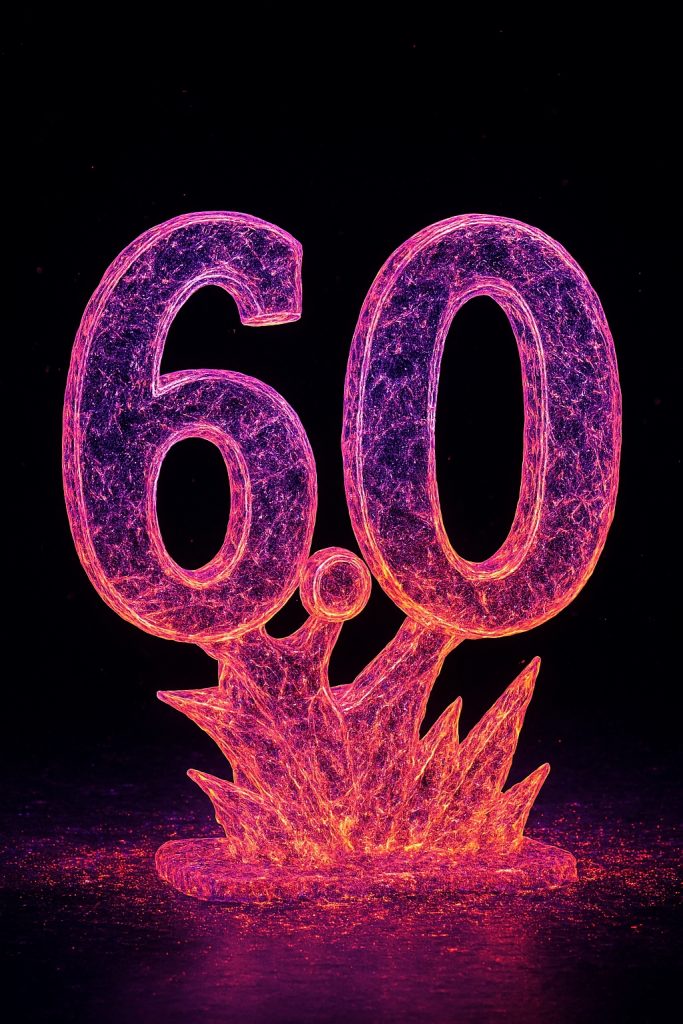
Future Forward – The Enduring Blueprint
Even as ice dancing evolves, Torvill and Dean’s Boléro remains a blueprint for excellence. New technologies, scoring systems, and choreographic trends have emerged, but their principles endure. Emotional resonance, narrative clarity, and musical integration are now standard expectations. Their routine is studied in coaching seminars, artistic workshops, and academic courses. It serves as a case study in how innovation can become canon.
Young skaters continue to cite Boléro as a turning point in their understanding of the sport. Judges reference it when evaluating artistic impression. Producers use it as a benchmark for televised performance. It’s not just a historical artifact—it’s a living influence. The routine continues to shape how ice dancing is taught, performed, and appreciated.
As sport and art converge in new ways—through virtual reality, augmented choreography, and immersive staging—Torvill and Dean’s legacy offers guidance. They remind us that the heart of performance is connection. That rules can be bent for beauty. That movement can tell stories that words cannot. The future of ice dancing will evolve, but its soul will always carry echoes of Boléro.
Cold War Elegance – Politics Beneath the Ice
The 1984 Sarajevo Olympics unfolded against the backdrop of Cold War tensions, where sport often served as proxy for ideological rivalry. Torvill and Dean’s performance, though apolitical on the surface, resonated as a quiet act of cultural diplomacy. Their British identity, paired with a French composition and universal emotional language, transcended national boundaries. In a divided world, their unity on ice offered a rare moment of global cohesion. The standing ovation in Sarajevo wasn’t just for athletic excellence—it was for shared humanity.
Western media framed their victory as a triumph of artistic freedom, contrasting it with the rigidity often associated with Eastern bloc competitors. Yet in Eastern Europe, their performance was equally celebrated, proving that beauty could bridge ideological divides. The routine’s emotional clarity made it accessible across cultures, bypassing political filters. Torvill and Dean became symbols of soft power, ambassadors of a world where movement spoke louder than rhetoric. Their perfect score was not just a sporting milestone—it was a cultural détente.
In later years, scholars analyzed Boléro as a moment of Cold War thaw, where art briefly eclipsed politics. The Sarajevo Games, often remembered for their peaceful spirit, gained added resonance through Torvill and Dean’s performance. Their routine became a case study in how sport can foster empathy across geopolitical lines. It wasn’t designed to be political, but its impact was undeniably diplomatic. Torvill and Dean didn’t just skate—they united.
Gender in Motion – Rewriting Roles on Ice
Torvill and Dean’s choreography subtly challenged traditional gender roles embedded in ice dancing. Unlike many pairs, their dynamic was not dominated by lifts or displays of male strength. Instead, their movements emphasized equality, mutual support, and emotional reciprocity. Dean didn’t present Torvill—he danced with her, as a partner in narrative and rhythm. Their routine suggested balance, not hierarchy.
This approach resonated with audiences tired of formulaic gender tropes in sport. Torvill’s presence was powerful, grounded, and emotionally rich—not just graceful or decorative. Dean’s role was expressive, vulnerable, and attuned—not just commanding or stoic. Together, they modeled a new kind of partnership, one that reflected evolving cultural attitudes toward gender. Their choreography became a quiet revolution in representation.
Contemporary skaters have built on this legacy, crafting routines that explore fluidity, equality, and shared agency. Torvill and Dean’s influence is visible in how gender is now portrayed in ice dancing—not as binary opposition, but as collaborative storytelling. Their work helped redefine what male and female roles could look like in performance. They didn’t preach—they embodied. And in doing so, they expanded the possibilities of movement and meaning.
The Rink as Stage – Spatial Storytelling in Boléro
Torvill and Dean treated the ice not as a surface for tricks, but as a stage for narrative. Their choreography mapped emotional geography—each curve, spiral, and glide corresponding to a shift in mood or tension. They used the full rink, drawing the audience’s eye across space like a camera panning through a film. Their movements created visual arcs, crescendos, and pauses that mirrored cinematic storytelling. The rink became a canvas, and their blades the brush.
This spatial awareness was revolutionary in a sport often focused on isolated elements. Instead of showcasing discrete skills, they wove them into a continuous emotional journey. Their transitions were seamless, their positioning intentional, their use of negative space profound. They understood that where you move is as important as how you move. The choreography invited viewers to follow, to feel, to interpret.
Their spatial storytelling influenced not just ice dancing, but stage design, film choreography, and immersive performance. Artists began to see movement as architecture, as narrative structure. Torvill and Dean’s routine became a masterclass in spatial dramaturgy. They didn’t just perform—they composed in space. And in doing so, they expanded the vocabulary of visual storytelling.
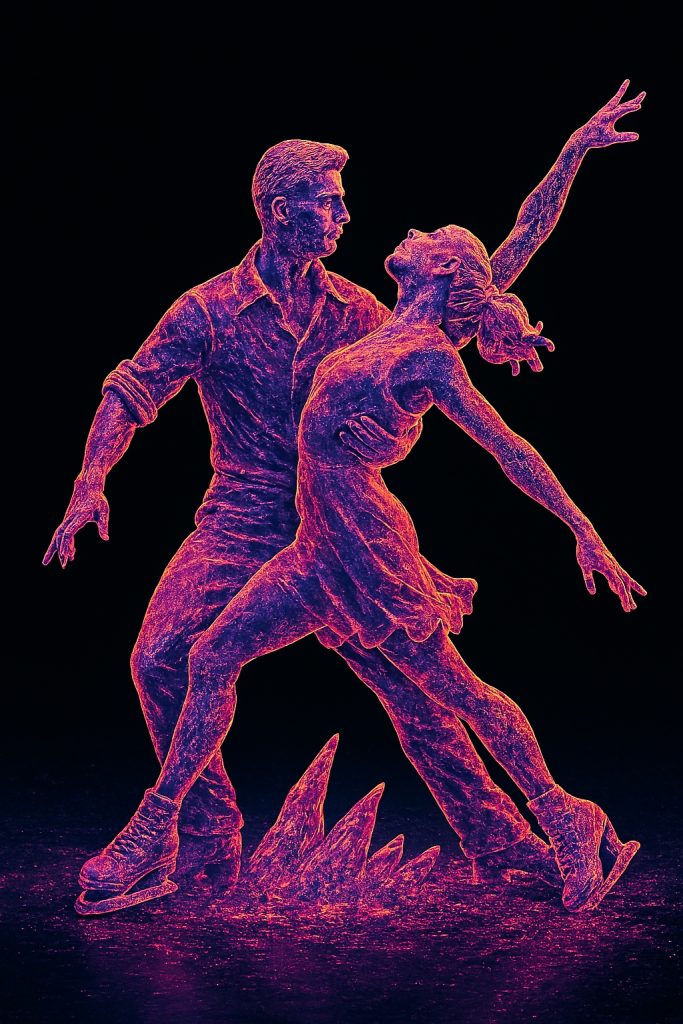
Archiving Emotion – Preserving the Legacy
The preservation of Torvill and Dean’s Boléro has become a cultural imperative. Footage of the routine is housed in Olympic archives, broadcast libraries, and digital platforms, ensuring its accessibility across generations. Scholars have analyzed it frame by frame, decoding its emotional grammar and choreographic syntax. Documentaries have chronicled its creation, reception, and legacy, offering behind-the-scenes insight into its artistry. The routine has been re-performed, reinterpreted, and ritualized in exhibitions and tributes.
Yet the challenge of archiving emotion remains. How do you preserve the feeling of that moment—the collective gasp, the silent awe, the eruption of applause? Torvill and Dean’s performance lives not just in footage, but in memory, myth, and affect. It’s a living archive, carried in the hearts of those who witnessed it. The emotional resonance is as vital as the technical record.
Museums and cultural institutions have begun to treat Boléro as a heritage artifact, worthy of curatorial care. It’s studied not just as sport, but as performance art, as cultural history. The routine is referenced in academic texts, artistic manifestos, and media retrospectives. Torvill and Dean’s legacy is not frozen—it’s dynamic, evolving with each retelling. They didn’t just make history—they made memory.
The Myth of Movement – Torvill and Dean as Archetype
Over time, Torvill and Dean have transcended biography to become archetypes of artistic athleticism. Their story echoes mythic structures—humble origins, transformative journey, climactic triumph, and enduring legacy. Boléro itself feels mythic, a ritual of ascent, unity, and transcendence. They are often described in symbolic terms—phoenixes rising, dancers of destiny, poets on ice. Their movements have become metaphors, their routine a legend.
This mythic framing is not accidental—it reflects the emotional impact they had on audiences. People don’t just remember the score—they remember the feeling, the awe, the sense of witnessing something eternal. Torvill and Dean became more than skaters—they became symbols of what human movement can express. Their legacy is invoked in moments of artistic ambition, emotional vulnerability, and narrative risk. They are cited not just in sport, but in literature, art, and philosophy.
The myth endures because it speaks to something universal—the desire to connect, to transcend, to move with meaning. Torvill and Dean showed that movement can be myth, that performance can be prophecy. Their story is retold not just in documentaries, but in dreams, in dances, in aspirations. They didn’t just change ice dancing—they became its legend. And legends, by nature, never fade.
Skating Past Borders – Boléro as Cultural Diplomacy
Torvill and Dean’s Boléro didn’t just captivate audiences—it quietly reshaped international relations through the language of art. In a Cold War era defined by ideological division, their performance offered a rare moment of emotional unity. Sarajevo, a city straddling East and West, became the perfect stage for this symbolic convergence. The British duo’s routine, set to a French composition and celebrated by a global audience, transcended nationalism.
Their perfect score was not just a sporting achievement—it was a diplomatic gesture. Western media framed it as a triumph of creative freedom, while Eastern bloc viewers embraced its emotional clarity. The performance was replayed across continents, becoming a shared cultural artifact in a time of political fragmentation. It softened perceptions, bridged divides, and reminded the world that beauty could bypass bureaucracy.
In the years that followed, Torvill and Dean were invited to perform in countries where cultural exchange was rare. Their artistry became a form of soft power, demonstrating how movement could foster empathy across borders. Scholars later cited Boléro as an example of “non-verbal diplomacy,” where emotional resonance replaced rhetoric. They didn’t speak—they danced. And in doing so, they united.
Judging the Narrative – Ice Dancing as Political Terrain
Ice dancing, more than most Olympic sports, is shaped by subjectivity—and subjectivity is inherently political. Unlike speed skating or downhill skiing, where time determines victory, ice dancing relies on judges interpreting artistry, emotion, and execution. This opens the door to cultural bias, national favoritism, and aesthetic politics. What one judge sees as innovation, another may view as rule-breaking.
Historically, judging panels have reflected geopolitical alliances. During the Cold War, scores often mirrored bloc loyalties, with Eastern and Western judges favoring their own. Even today, controversies arise over inflated marks, inconsistent standards, and opaque criteria. Athletes must navigate not just choreography, but the politics of perception. Success depends on aligning with—or challenging—the dominant aesthetic narrative.
Torvill and Dean’s perfect score was revolutionary because it broke through these political filters. Their routine was so emotionally undeniable that it forced consensus across ideological lines. But their legacy also exposed the fragility of fairness in judged sports. Ice dancing remains a battleground of taste, tradition, and influence. Every performance is a negotiation—not just with the ice, but with the system watching from above.
Global Influence – Beyond Britain
Though British, Torvill and Dean’s impact was global. Their routine was broadcast in dozens of countries, inspiring skaters worldwide. In Japan, Russia, and Canada, young athletes cited Boléro as their motivation. Their style influenced international choreography and training.
They performed in global exhibitions, bringing their artistry to new audiences. Their story was translated into multiple languages. Cultural institutions honored them with awards and retrospectives. They became symbols of universal excellence.
Their influence reached beyond skating—into dance, theater, and film. They were studied in art schools and conservatories. Their legacy became part of global performance history. They bridged cultural divides through movement.
Torvill and Dean proved that art knows no borders. That emotion is a universal language. Their global influence continues to inspire. They are not just British legends—they are world icons.
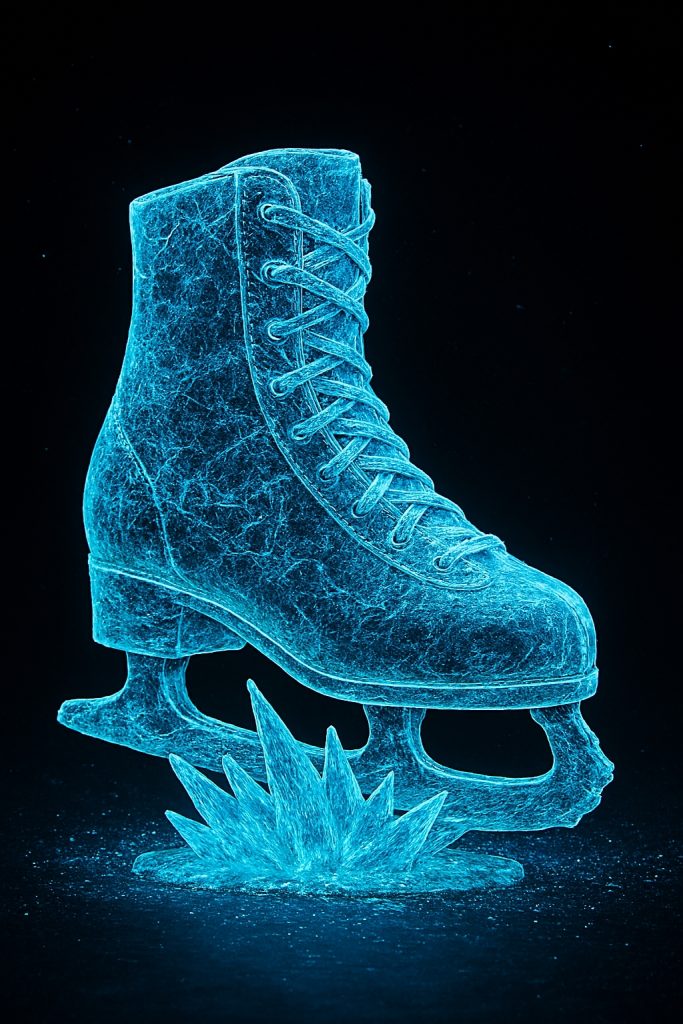
Emotional Impact – Why It Moved Us
What made Boléro so emotionally powerful? It wasn’t just the music or the choreography—it was the sincerity. Torvill and Dean danced with vulnerability, with connection, with purpose. Their movements felt personal, intimate, and universal.
Audiences saw themselves in the routine—longing, unity, transformation. The emotional arc mirrored human experience. The final embrace felt like resolution, like catharsis. It was more than sport—it was soul.
Critics described the routine as haunting, transcendent, unforgettable. Viewers cried, cheered, and stood in silence. The emotional impact was immediate and lasting. It became a shared memory, a cultural imprint.
Torvill and Dean reminded us that movement can speak. That silence can be powerful. That emotion can be scored.
The Moment That Endured – Boléro as the Soul of Sarajevo 1984
Among the snow-covered peaks and political undercurrents of the 1984 Winter Olympics, one moment rose above the rest—Torvill and Dean’s Boléro. While the Games featured thrilling alpine races, dramatic hockey clashes, and record-breaking feats, it was the ice dancing final that etched itself into global memory. The image of the British duo lying motionless on the ice, then rising into a hypnotic crescendo, became the emotional apex of the entire event. It wasn’t just a routine—it was a revelation.
Media coverage quickly crowned it the highlight of the Games. Newspapers led with their perfect score, and broadcasters replayed the performance endlessly. Even athletes from other disciplines spoke of being moved, some skipping their own events to watch the duo live. Sarajevo locals embraced them as honorary icons, their artistry offering a moment of pride and unity in a city often caught between worlds. The performance became a symbol of what the Olympics could be—not just competition, but communion.
Decades later, when people recall Sarajevo 1984, Boléro is the first memory that surfaces. It’s taught in Olympic retrospectives, referenced in cultural documentaries, and celebrated in anniversary tributes. The routine didn’t just win gold—it became the emotional gold standard. Torvill and Dean gave the Games a soul, a story, and a soundtrack. And in doing so, they ensured that Sarajevo 1984 would never be forgotten.
Join the Discussion
How do you think Torvill and Dean’s Boléro performance continues to influence today’s athletes and artists? Have you seen echoes of their style in other forms of entertainment?
Conclusion
Torvill and Dean’s perfect score in Sarajevo wasn’t just a historical achievement—it was a cultural inflection point. Their choreography, emotional depth, and defiance of convention redefined what ice dancing could be. They bridged the gap between sport and storytelling, inspiring generations of performers across disciplines. Their legacy lives on in every routine that dares to be more than technical, in every performance that seeks to move rather than just impress. From Olympic ice to global screens, their influence is undeniable. They didn’t just skate—they narrated, embodied, and transformed. The perfect 10 was not an end but a beginning, a signal that art and sport could coexist in sublime harmony. Their story reminds us that innovation often begins with a single, bold gesture—like lying down on the ice. And from that moment, the world stood up and took notice.
#TorvillAndDean #Bolero1984 #Perfect10 #IceDancingHistory #OlympicLegends #CulturalImpact #SportAsArt #PerformanceInnovation #SkatingRevolution #PopCultureIcons


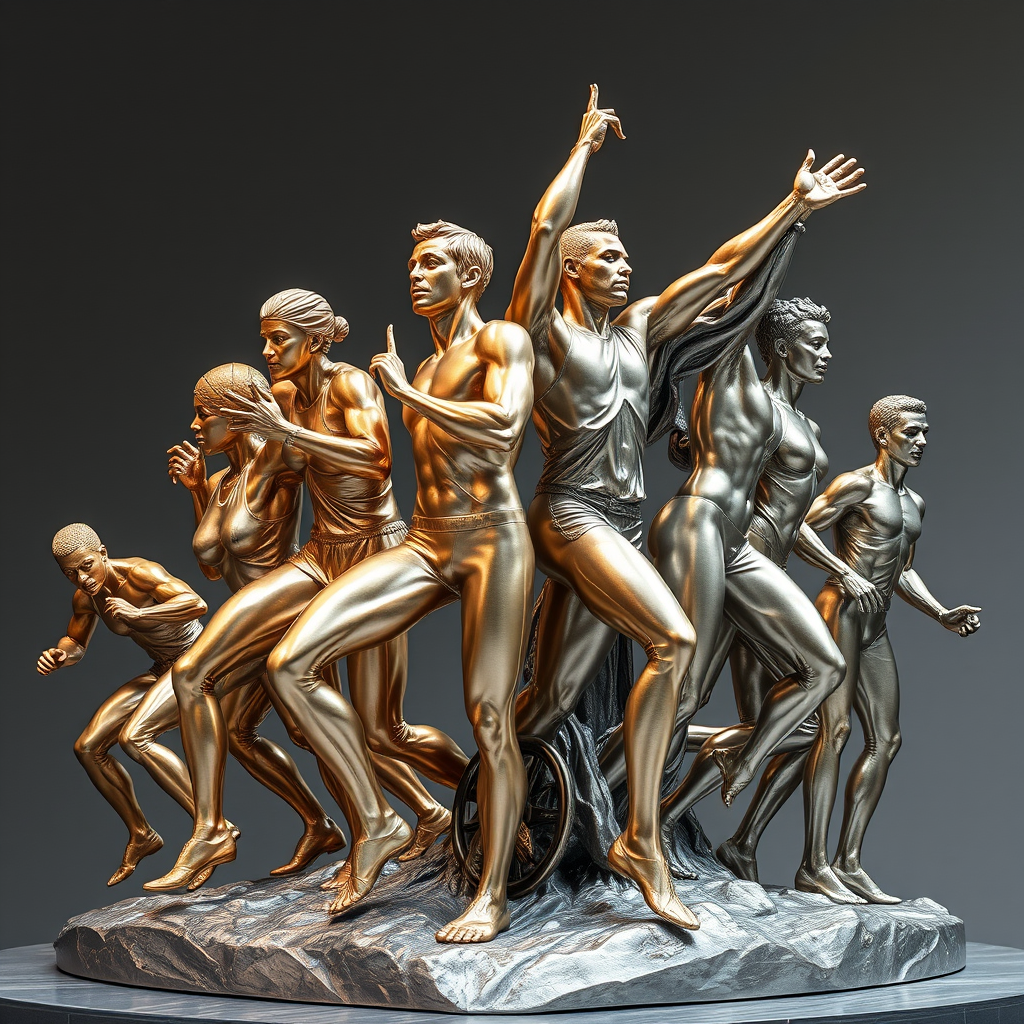




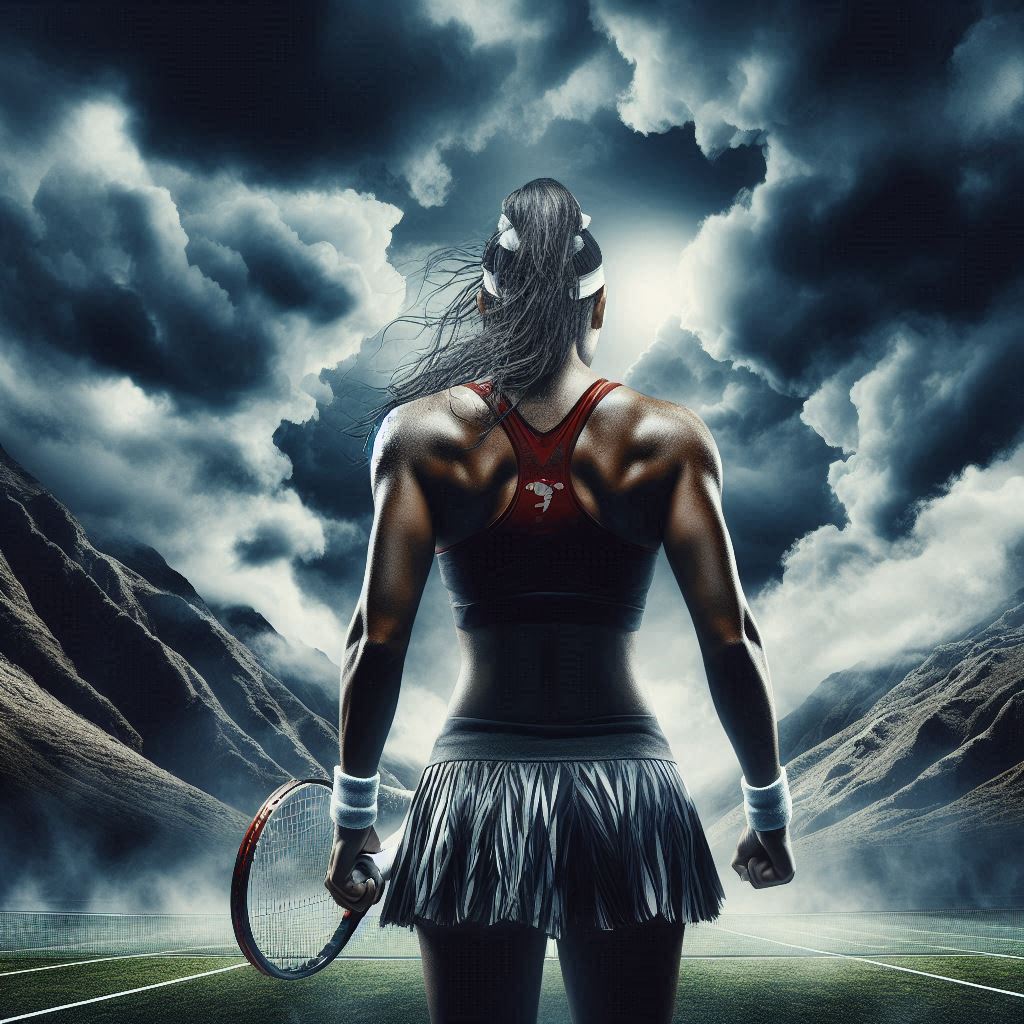
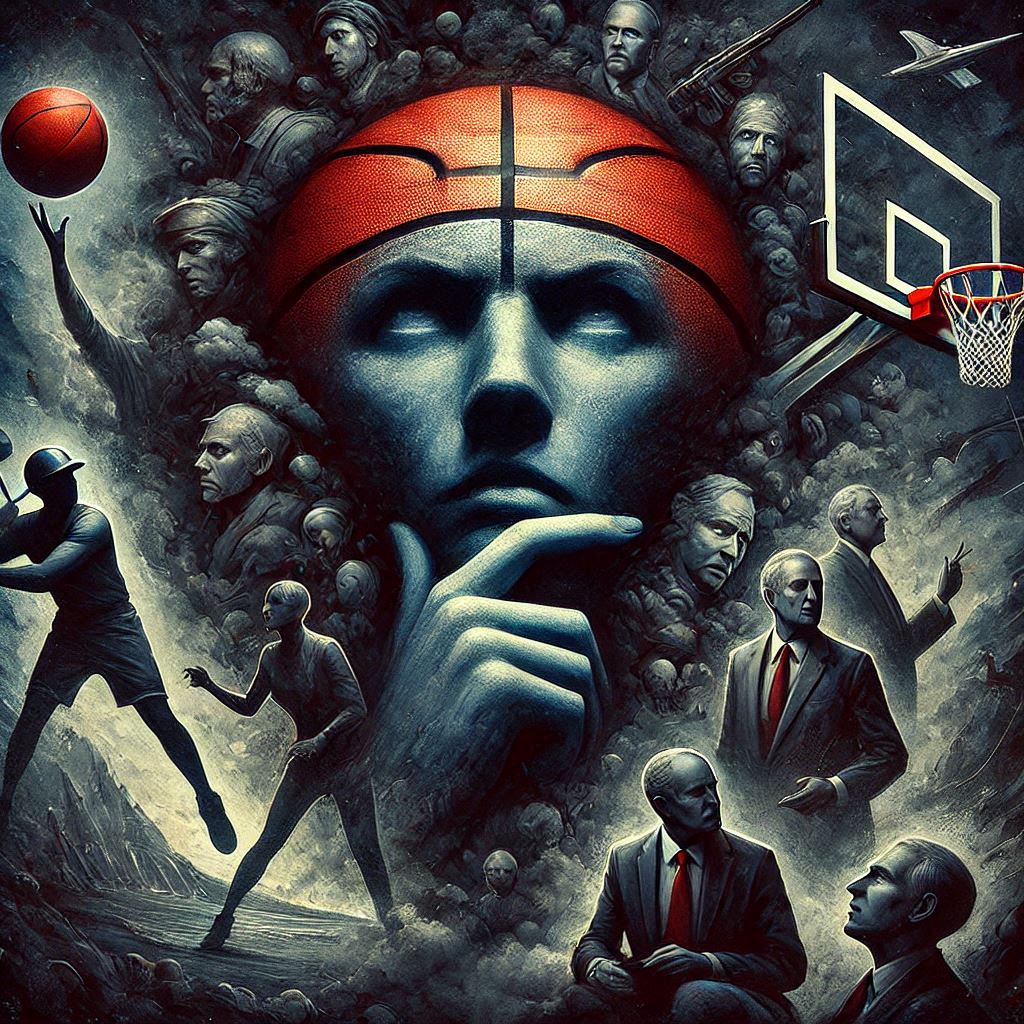
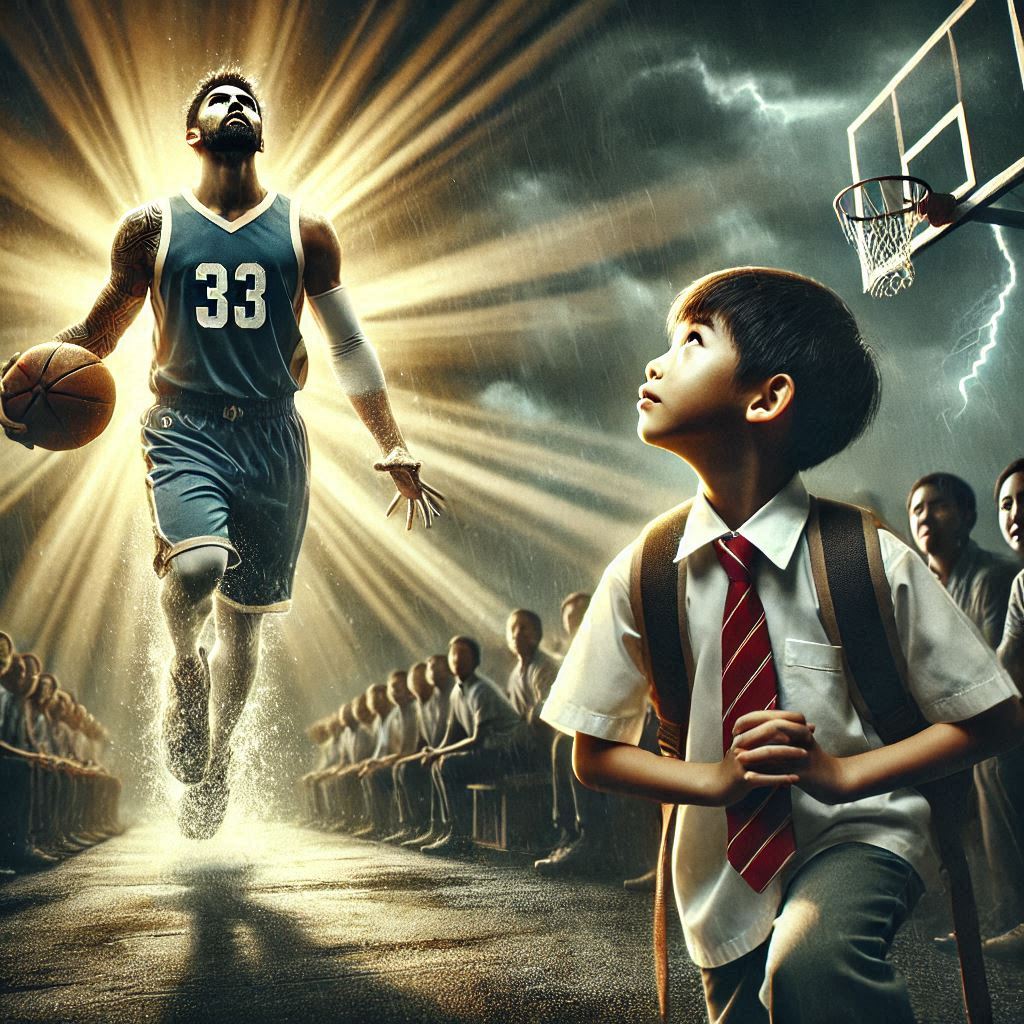




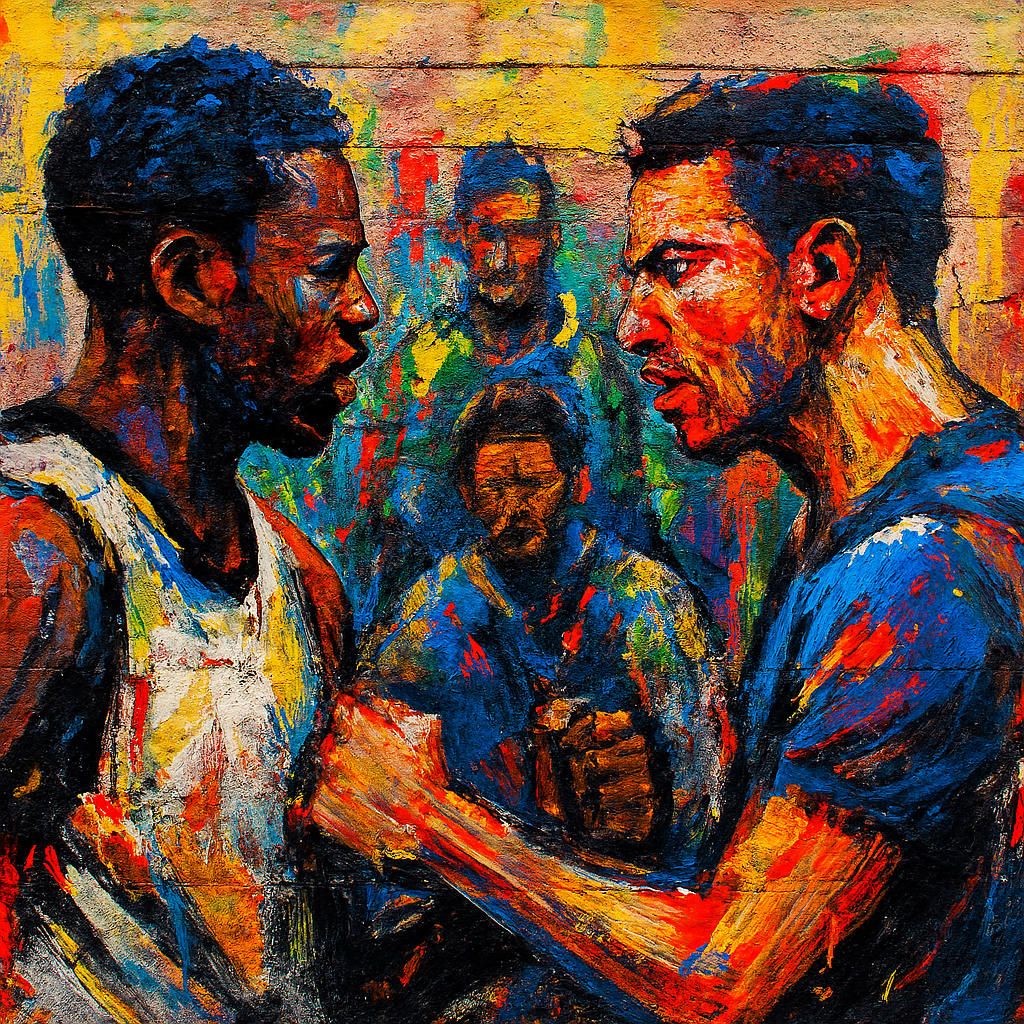
Watching Sports on TV or Streaming Can Surpass the Live Experience
[…] In today’s hyper-connected world, the way we consume sports has evolved dramatically. While attending live events still holds cultural and emotional significance, remote viewing has become a compelling alternative. From the comfort of home, fans can access high-definition visuals, expert commentary, and real-time statistics. These features offer a level of control and insight that live attendance often lacks. Remote viewing isn’t just a convenience—it’s a transformation of how we engage with sport, community, and storytelling. […]